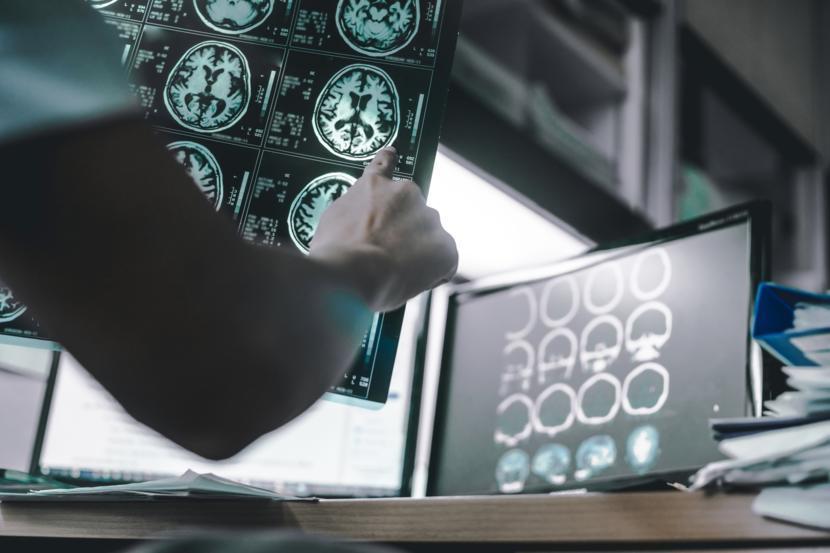This Is What Alzheimer's Does to the Body

Thanks to technology and science, it is now possible to clearly see the damage that certain diseases and conditions can do to the human body. Because of the constant research on Alzheimer's disease, experts have been able to establish the neurodegenerative disease's true impact on the brain, from a physical and tangible standpoint.
Right now, it is estimated that about 50 million people around the world suffer from Alzheimer’s disease at some level. Also, it seems that this disease will not be slowed any time soon, as the numbers are expected to quadruple by 2050.
There are a few known causes of Alzheimer's disease, and a number of them could be found in the brain. However, while the cause of Alzheimer's disease is somewhat known, researchers are still unable to find ways to catch the disease in its early stages. This is because most of the symptoms are noticeable when the disease is in its most advanced stages. Alzheimer’s begins when brain cells start losing their function and slowly die, causing problems such as:
- A decline in thinking abilities
- Memory loss
- Personality changes
Regarding the physical modifications the brain suffers due to Alzheimer’s disease, some regions of the brain shrink. This process is called atrophy, which reduces the brain volume considerably. However, what is really happening to the brain is way more serious and complex.
Studying the changes in the brain of someone with Alzheimer’s
There is an important disruption in the communication process between neurons where cells transmit electrical impulses and chemical signals, increasing the difficulty with the communication between both regions of the brain. The lack of communication between the two regions is what causes cell death in the brain, aided by the creation of two proteins called tau and beta-amyloid. It has been demonstrated that the interaction between these two proteins remains unknown but it seems to be lethal for the brain since it accumulates into clusters that are known as beta-amyloid plaques.
Furthermore, Alzheimer’s disease is considered a quite difficult condition to diagnose. So far, experts have not found a reliable and accurate way to measure the building-up process of lethal proteins in the brain. Finding a proper way to do it has been one of the main targets of experts in the area. Sadly, right now, the only way to determine whether someone suffers from Alzheimer’s disease or not is by examining their brain tissue once they have already died.
Also, the problem becomes more important when taken into account that these beta-amyloid plaques can be found in people with healthy brains. It seems like these two proteins are common, but the excessive amount is what could be damaging for the brain.
More recent research suggests chronic inflammation may play a role. Inflammation is a part of the body’s defense system against diseases and occurs when white blood cells release chemicals to protect the body from foreign substances. But, over a long period of time, it can also cause damage.
Other causes behind Alzheimer’s disease
Nevertheless, tau and amyloid cannot be considered to act alone during these tissue-damaging, long-term inflammation processes in the brain. There are other cells known as microglia that also play an essential role in this process. It has been demonstrated that microglia cells are able to destroy toxins and waste, but when they fail in this process of clearing amyloid plaques and tau tangles, inflammation begins and eventually becomes chronic. The inflammation of brain cells usually ends with their death at that point.
However, scientists have taken research to another level and were able to identify a gene called TREM2, which can be responsible for microglia and its participation in the process of producing proteins that are lethal for brain cells. In these studies, it was found that patients’ brains do not have the TREM2 gene working properly.
The majority of patients suffering from Alzheimer’s disease tend to experience other conditions such as heart disease and problems in their circulatory system. Most of these are caused by the accumulated deposits of beta-amyloid in the brain arteries. Among other conditions, mini-strokes and atherosclerosis are also quite common in people with Alzheimer’s.
The aforementioned vascular problems tend to reduce blood flow and therefore break down the blood-brain barrier, making toxic waste from the brain circulate throughout the entire body and accumulating in other parts. Also, the brain is also affected by this problem since glucose can enter the brain, triggering the production of toxic proteins.
Looking for personalized treatment for Alzheimer’s disease
The most recent advances achieved in this area have focused on deeper parts of the brain, studying the connections between neurons that are called synapses. One of the most recent studies published was the one that appeared in Nature magazine, whose main target was a process in cells that is thought to contribute to the breakdown of the communication between neurons. The most relevant findings in this area indicate that this may be caused by a lack of specific proteins in the brain. The name of the said protein is RBFOX1.
These researches have triggered the development of new drugs that are currently being tested in order to determine whether they can work as solutions for brain-wide changes that take place because of Alzheimer’s disease. The creation of these drugs has triggered the popular belief among experts that there will be personalized approaches to treat Alzheimer’s disease in the future and that they will be more popular than the ones used in the present.
If this turns out to be true, in the future there would be a combination of tailor-made drugs created to serve as a solution for many of the problems caused by Alzheimer’s disease. Researchers also state that it would be similar to current treatments for cancer.
Most experts hope that there will be new and more effective ways to treat such a complex disease with a considerable level of effectiveness. The best option for people with Alzheimer’s is the future treatments are tailor-made according to the specifications of each patient.
















